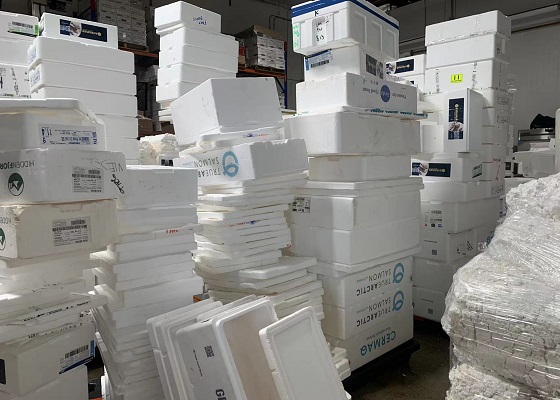Today, many researchers are trying to cut off the main source of marine plastics, and EPS foam boxes widely used in fisheries.
After EPS foam fish boxes are used for the basic protection of fish and seafood, EPS foam boxes may have been polluted by fish residues and malodorous liquid, which makes them less suitable for recycling, generally landfill or incineration.
Scientific research shows that EPS foam is harmful to marine life and human health. About 80% of marine garbage comes from land and 90% of marine floating waste is EPS foam. But the fishermen’s reaction to this fact was very slow. The problem is that if alternative materials are to be widely used, they must be as easy to use and cheap as EPS foam.
It is impossible to get EPS foam waste out of our life. We need to recycle this material by reducing its volume. GREENMAX EPS foam compactor recycles EPS foam waste through crushing and compaction. The compacted EPS foam block is 50 times smaller than before and easier to transport. More importantly, compacted EPS foam is not a waste. You can choose to sell it to recyclers or use it to make new foam products.
The fish industry of the United States is developing well in the United States, because the United States is close to the Atlantic Ocean, the Pacific Ocean, and the Gulf of Mexico, with a coastline of 22680 kilometers. Every year, the United States imports and exports a large number of fish and fish products, which means that there are many fish processors in the United States. If they are not properly handled, the polystyrene fish boxes they use will also lead to a large number of discarded EPS foam.
The emergence of GREENMAX EPS foam has provided a lot of help to local fish processors and EPS foam recyclers. They can reduce the volume of the fish tank by compression so that the waste EPS foam can be stored and transported at a lower cost. The regeneration of EPS foam can also avoid the old landfill or incineration, which is of great significance to protect the environment.
